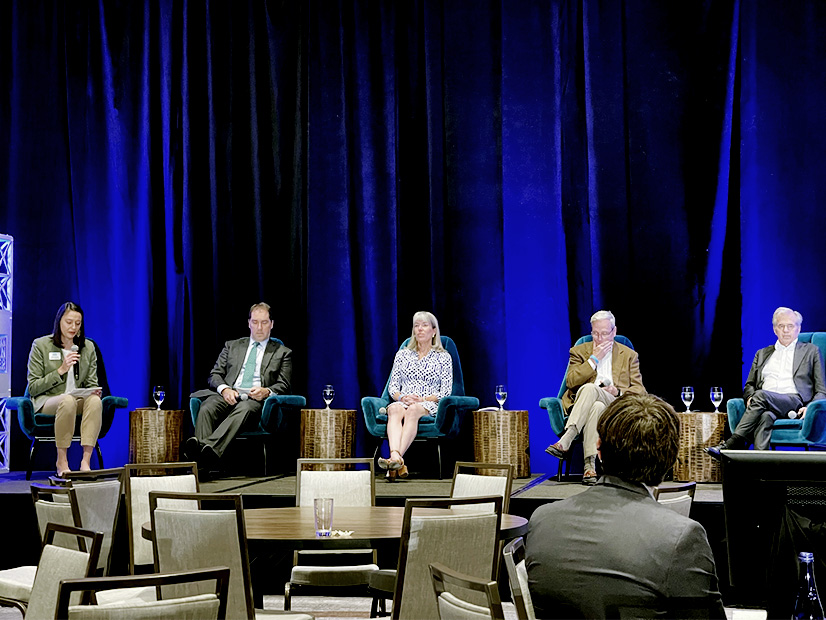
BOSTON — To meet the Biden administration’s 30-GW offshore wind goal by 2030, private investment coupled with government-backed financing is needed to spur construction of wind turbine installation vessels (WTIV), which carry a price tag of $500 million.
From the standpoint of the U.S. maritime industry, OSW is a “generational opportunity,” said Jennifer Carpenter, CEO of the American Waterways Operators, during the American Clean Power Association’s Offshore WINDPOWER 2021 conference on Thursday.
Multiple things can be done to “develop the supply of vessels” to serve the lifecycle of an OSW project, “from a survey, all the way on through construction development, eventual decommissioning,” she said.
“The first thing I would say is let’s not make it overly complicated to stimulate supply,” Carpenter said. “We have to focus on demand. It is not surprising that we do not have a fleet of vessels sitting on the proverbial shelf waiting to serve an industry that has not yet existed in this country because we’re doing something new.”
Because the Jones Act enjoys strong bipartisan support in Congress and from President Biden, Carpenter added, it “helps foster the certainty that we need to make investments” in WTIVs and other vessels. The Jones Act can be waived under tightly controlled circumstances, such as national defense, and there are no qualified U.S. vessels to meet that need, according to Carpenter.
Dominion Energy (NYSE: D) is currently constructing a Jones Act-compliant WTIV, which will be completed in 2023. However, U.S. developers will also have to rely on European-flagged jack-up vessels if any steel goes in the water in the near term. There are nine WTIVs available globally that can install turbines greater than 10 MW, and of those, only two of them can install turbines in the 12-MW-plus category. (See US Must Watch Europe’s OSW Supply Constraints, Analyst Says.)
Karl Humberson, director of construction projects for Dominion, said during the conference that he hopes construction of the WTIV provides the OSW industry “a level of certainty” that investments such as this are “going to help everybody else.”
Constructing a WTIV, he said, is not part of Dominion’s core business, but when the company looked at the puzzle pieces for OSW to determine “which ones are missing,” Dominion took “some risks.”
“We’re a little bit different. We are an owner-operator of a wind farm, so we have a little bit of certainty saying there’s a project here that we’re going after,” Humberson said. “That helped us make some decisions related to the WTIV. … We think it is the right way to build offshore wind, and that’s why we made these investments.”
While heavy lift vessels “get a lot of press” because of the significant investment, Troy Patton, COO for Ørsted Offshore North America, said he was struck by how many additional vessels are needed on an OSW project. Construction for a project off the coast Grimsby, England, he said, required upward of 50 vessels to deliver equipment and personnel to the wind farm.
The Title XI Federal Ship Financing Program will pay up to 87.5% of the cost for certain vessel classes and shipyards, according to David Gilmore, director of the Office of Marine Financing at the United States Maritime Administration. That payment can cover the construction of new vessels, reconfiguring vessels and modernization of shipyard facilities. Applicants for this program must meet financial requirements. There are also loan guarantee programs for onshore wind, which could be expanded to OSW projects and a capital construction fund with tax deferrals.
“There’s a lot of opportunity out there,” Humberson said.

